Before they disappear. The Omo Vallley, Ethiopia
With faster and more affordable transport the world has become a smaller place. Trips to the Great Wall of China, the ancient Inca ruins of Machu Picchu and temples of Angkor Watt in Cambodia are no longer exclusive vacations for the rich and famous. But this ease of travel comes at a cost, many of the world’s cities have the same shops and restaurants as one another. A global culture is spreading across the planet.
Yet there are still places that are largely undiscovered by tourists, far removed from the glitzy boom cities of Asia, pleasant order of Europe and high-speed Wi-Fi. The Omo Valley, tucked away in southwestern Ethiopia, is one such place. Ethiopia’s resistance to colonialism and political instability in recent decades has allowed this place to be largely forgotten by the industrialization that has marked modern Africa.
Locals get around the dust laden roads by donkey and cart, farmers hack the soil with sickles, and the airport is a portacabin that has seen better days. This isolation has allowed numerous tribes, all distinct from one another, to retain their primeval way of life and even thrive. And as Ethiopian Airlines has started operating a daily flight to the small town of Jinka from Addis Ababa it is now possible to visit these fascinating peoples without taking the arduous dirt road journey across Ethiopia.
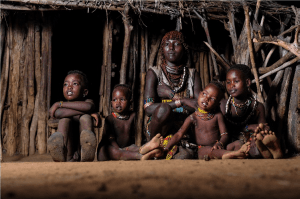 For anthropologists, the Omo Valley is perhaps synonymous with the Hamar and Mursi tribes. The Hamar people are the most populous tribe in the region being close to 50,000 in number. As my 4X4 left the town of Jinka, the gateway to the tribal lands, and navigated the bends of the valley I noticed the change in people at work in the fields and walking the roads. Hamar women have a distinctive hairstyle that involves curling the hair with a mixture of butter and ochre clay and takes the same shape as the straw huts they live in. The men have a greater variation of hairstyles, some have platts, and some shave it close to the bone leaving little tufts on their foreheads. Conventional t-shirts and trousers are nowhere to be seen, with locals preferring to use cow skins and large necklaces, which leaves most of their bodies exposed to the elements.
For anthropologists, the Omo Valley is perhaps synonymous with the Hamar and Mursi tribes. The Hamar people are the most populous tribe in the region being close to 50,000 in number. As my 4X4 left the town of Jinka, the gateway to the tribal lands, and navigated the bends of the valley I noticed the change in people at work in the fields and walking the roads. Hamar women have a distinctive hairstyle that involves curling the hair with a mixture of butter and ochre clay and takes the same shape as the straw huts they live in. The men have a greater variation of hairstyles, some have platts, and some shave it close to the bone leaving little tufts on their foreheads. Conventional t-shirts and trousers are nowhere to be seen, with locals preferring to use cow skins and large necklaces, which leaves most of their bodies exposed to the elements.
Once the people hunted antelope and small pigs but after they disappeared they became cattle herders and farmers as the land is free for cultivating and grazing. In dry season the Hamar live in camps with their herds, surviving off the milk and blood from the cattle.
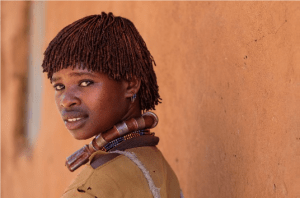 On the first evening I camped in a Hamar village, close to the market town of Turmi which has a few bars, small shops and very basic hotels. Although a typical village will feature a number of stick huts most families prefer to sleep outside under the stars, only venturing inside when it rains. They wash at a nearby hose pipe and go to the toilet in the lush shrubbery.
On the first evening I camped in a Hamar village, close to the market town of Turmi which has a few bars, small shops and very basic hotels. Although a typical village will feature a number of stick huts most families prefer to sleep outside under the stars, only venturing inside when it rains. They wash at a nearby hose pipe and go to the toilet in the lush shrubbery.
My sleep was interrupted by the bleat of the goats and moo of the cows but it wasn’t experience I would change. The family I camped close to invited me into their hut for a morning coffee, drank out of a pot made of wood and cow’s skin, and they happily posed for a number of photographs taken with an off camera flash.
The following day I went to the weekly Hamar market in Turmi where locals gather around the dusty town square to swap wares, gossip and drink copious amount of alcohol. Unfortunately, my trip didn’t coincide with the famous cattle-leaping ceremony that men go through in order to reach adulthood, whereupon young Hamar women get whipped, leaving lifelong scars, to prove their love for their kinsmen.
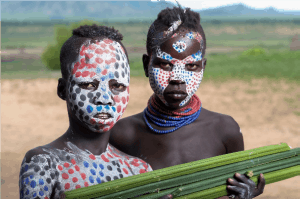 The same day we left Turmi and headed south for the Karo tribewho live on the banks of the Omo Valley, a scenic spot known as the Omo bend. The Karo are the smallest tribe in the region with a population of under 3,000. They are famed for their distinctive use of body paint, creating pleasing stars, lines, animal motifs or
The same day we left Turmi and headed south for the Karo tribewho live on the banks of the Omo Valley, a scenic spot known as the Omo bend. The Karo are the smallest tribe in the region with a population of under 3,000. They are famed for their distinctive use of body paint, creating pleasing stars, lines, animal motifs or
handprints across their frames. To do this they use locally sourced ochre, white chalk, yellow mineral rock, charcoal, and pulverized iron ore.
The Karo are more reliant on tourism for survival. Although the beautifying of their bodies with paint is a long practiced tradition their appearance came across as exaggerated for visitors. Women and children wait in their villages during the day for tourists to arrive, charging a small fee for their photo to be taken. This can be paid directly to the person photographed or as a lump sum to the village chief if you are photographing a number of subjects. Unlike the Hamar, the Karo clambered for their picture to be taken and I was made to crudely choose who I wanted to pose for me and my flash. After some deliberation I selected a two very keen boys and some mothers with their new born babies that hung out of their leather front garments oblivious to the click of the camera.
The Karo along with the Mursi tribe are the most visited in the region. The Mursi live in villages two hours from
Jinka so it is recommended that you spend the evening there before leaving for the wilderness in the morning.
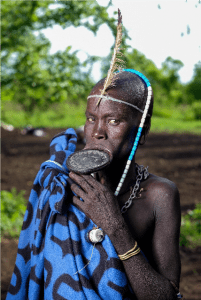 En route to their territory we picked up a scout, armed with an AK-47, who joined us for the duration of the village
En route to their territory we picked up a scout, armed with an AK-47, who joined us for the duration of the village
visit. Locally, the Mursi are known as warriors having had a number of violent encounters with other Mursi sects and outsiders in recent history. Although the scout was more of a deterrent towards violence and spoke to
me in broken English in the car his presence unnerved me.
Mursi women are famed for having their lower lips pierced and a clay plate inserted when they are 15 or 16. There are a number of theories behind this practice. Some say it was started to warn off slave traders, others remark that it is a sign of beautification and the larger the plate she can fit in her lip the more cattle her father can expect to receive from a prospective husband. The men practice light scarification on their shoulders after killing an enemy, and shave geometric patterns on their head. Both sexes use decorative headpieces such as cow horns and plants which make for fantastic photo opportunities.
The Mursi, like the Hamar, are pastoralists. During the dry season they live mainly along the banks of the Omo. When the rains come they return to the grasslands, east of the river, to live close to their cattle and enjoy fresh
milk.
The Omo Valley has been a popular haunt with photography enthusiasts and the more intrepid among us for a number of years. However, with improving transport links such as the new daily flight from Addis Ababa and the resurfacing of some roads it is now an opportune time to visit these remarkable tribesman. The growing nearby towns of Jinka and Arba Minch have also presented the Hamar, Mursi, Karo and the other tribes in the region the chance of a formal education, a pathway into conventional jobs and modern society. Indeed, younger Hamar and Mursi can be found in these towns in search of a different lifestyle having left their families behind. The changes are gradual but it is unlikely that the fascinating traditions of the tribes will last for many generations more. It is recommended you visit the region sooner rather than later, before they disappear forever.
A trip to the Omo Valley is not for the faint hearted. The lip plates of the Mursi women are as shocking as they are cruel, tribesmen and scouts armed with machine guns can create a tense atmosphere, especially when the flash on your camera fails and they loom over you impatiently as you are trying to fix it. The ill equipped hotels means your internet access in the valley will be very limited and poor in Jinka. However, Ethiopia remains one of Africa’s top destinations. In a two week holiday, you can sip on excellent coffee and explore the some of the best museums on the continent in the safe and sprawling Addis Ababa, travel to the inspirational churches of Lalibela, hike the Simien Mountains and of course spend a few days with the tribesmen of the Omo Valley.
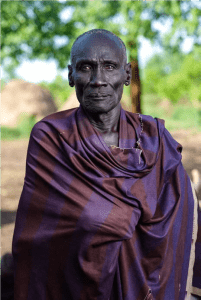
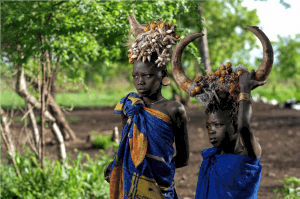
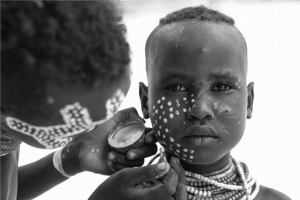

 TTGLA19 - Finalist (003).jpg)











